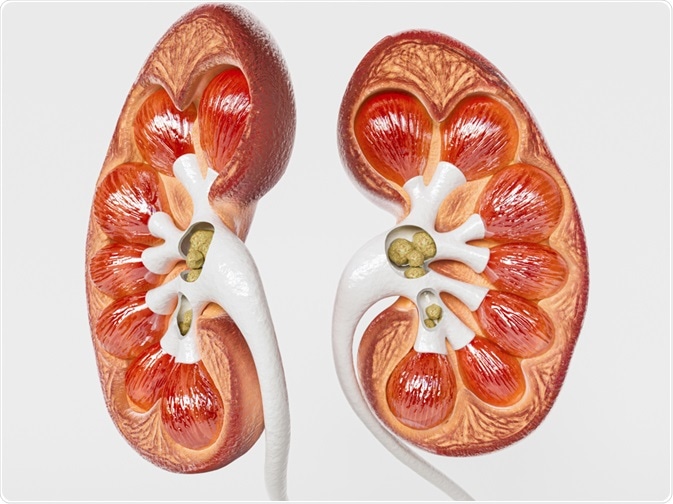Cystinuria is a chronic condition that cannot be cured. However, certain management techniques can help to prevent the formation of stones in the kidneys and their resulting complications.
What is Cystinuria?
Lifestyle modifications
Firstly, it is important to make small lifestyle changes to prevent kidney stone formation and the need for further therapy.
Keeping hydrated by drinking an adequate amount of water can help to lower the concentration of cystine in the urine. As a result of the reduced cystine concentration, there is a decreased risk of stone formation. Research in this area has indicated that nearly one-third of patients can prevent stone recurrence by simply increasing their fluid intake.
Additionally, small dietary changes can have a significant impact on the formation of kidney stones. In particular, reducing the consumption of salt has been associated with a decreased risk of stone recurrence.
Alkalizing agents
The pH is an important factor for kidney stones to form, as cystine is more soluble at a higher pH. For this reason, alkalizing agents like potassium citrate can help to increase the pH and the solubility of cystine, resulting in fewer recurrences.
Chelation or antiurolithic therapy
Thiol compounds have the ability to bind to cystine, which results in the formation of a disulfide complex that does not cause stones to develop and may instead help to dissolve kidney stones.
D-penicillamine is a chelating agent that increases the solubility of cystine, reducing the effects of cystinuria. Approximately half of all patients experience adverse reactions with this therapy, which limits its therapeutic use. These effects may include rash, gastrointestinal effects, arthralgia, leukopenia, and nephritic syndrome. Tiopronin is another agent with similar action and side effect profile.
Alpha-mercaptopropionylglycine (alpha-MPG) is a second-generation chelating agent with a similar mechanism of action, but is generally tolerated better that C-penicillamine.
Captopril, which is an angiotensin-converting enzyme (ACE) inhibitor drug that is typically used to treat hypertension, forms a thiol-cystine mixed disulfide, which has a higher solubility and can reduce the formation of stones. This is usually used a second-line therapy option when other treatments have failed to produce an adequate response.
Surgical procedures
When the stones in the urinary tract are large in size and cause significant pain, their surgical removal may be necessary to relieve symptoms. There are several different surgical procedures that may be performed, depending on the specific circumstances.

Image Credit: Crevis / Shutterstock.com
Extracorporeal shock wave lithotripsy (ESWL) uses shockwaves directed towards large stones to fragment the stones into smaller pieces that can pass through the ureters and be excreted more easily. However, this procedure is less effective for kidney stones associated with cystinuria than other types of stones.
Percutaneous nephrolithotomy involves the insertion of an instrument into the kidney that is used to break the stones or remove them from the organ entirely.
It is worth noting, however, that these surgical procedures will not help to prevent the formation of kidney stones in the future. While these procedures are effective in removing current stones and relieving the related symptoms, other preventative techniques are required to prevent recurrence.
Treatment decisions
When making decisions about the best course of treatment for an individual with cystinuria, it is important to consider relevant factors. These may include the frequency and severity of symptoms, the response to treatment and the likelihood of symptom recurrence.
Follow-up management should involve monitoring the pH and cystine concentration of the urine. Patients with severe forms of the disease should have regular checkups every three months with ultrasound imaging to check for any changes. This also helps to improve patient compliance, which has a positive effect on overall health outcomes.
References
Further Reading
Last Updated: Jun 14, 2023